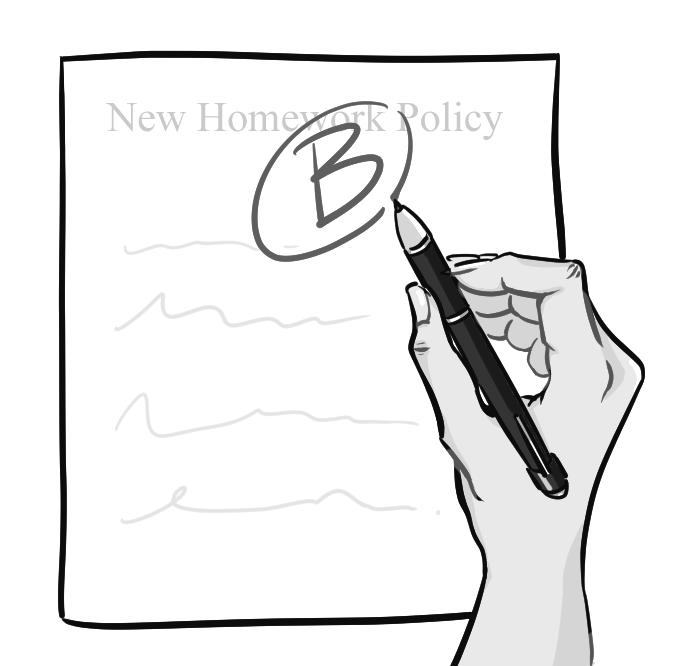Grading the Homework Policy
By now, we are resigned to the fact that homework is an intrinsic element of school, and by extension a student’s life. Its existence is ingrained into routine, yet the specifics are always subject to updates. The homework policy put into effect last May was an attempt to bring the previously shadowy rules of assigning homework out of obscurity.
To determine how the new homework policy is succeeding in its classes at Los Altos, we can grade it. After calculating all the points, we can ascertain that the homework policy’s implementation is effective in its regulation of homework time and its connection to stress.
However, the specifics tells another story about students and stress. The sheer amount of AP and honors classes students take is tied strongly to their stress levels. While the homework policy is effective in its intentions, it is only a preliminary step to reducing sources of student stress. We can be content with a solid “B.”
AP classes are now mandated to assign four to five hours of homework a week. College preparatory classes are confined to two to three hours weekly. Weekend homework is clarified to not exceed the amount of material assigned on a normal weekday. Summer vacation is now designated as devoid of homework.
These changes in the policy are all targeted toward stress reduction for students. But has the regulation, involving much deliberation, come to fruition?
Sophomore Karina Halevy has taken on the challenge of an denser workload of several AP and honors classes. Her schedule is comprised of World Literature Honors, AP European History, AP Physics II, AP Calculus BC and AP Computer Science, along with Advanced Jazz. For her, the policy’s regulation of weekly homework time is the most effective aspect.
“It’s made it a lot easier for me to break down my homework.” Karina said. “I think last year, I just didn’t have as much of a concept of how much time I was supposed to take, and that was a little more difficult. So I think this year it’s been a little easier to manage.”
Having a limit on how much homework to expect weekly enables students to be aware of the commitment needed for a class, allowing for better time management. Stress ties into this facet of how well the policy works; knowing that certain classes will require a more or less concrete amount of work weekly reduces the pressure of uncertainty.
However, another aspect of the policy that seemed as though it would boost its effectiveness by a few points has had the opposite effect.
Algebra II Honors teacher Matthew Chaffee assigned a review packet of Algebra I material in prior summers. The new homework policy eliminated this assignment from the curriculum.
“[The packet was] just for kids to make sure, when they were entering [Algebra II Honors], that they understood that their Algebra I had to be… pretty solid,” Chaffee said. “[This year’s] quiz scores were typically lower. [Students did not have] enough time to process a lot of that information or review it as it was meant to be.”
The blanket ban on summer homework has posed setbacks for student understanding and the year’s curriculum. Ironically, this could potentially lead to more stress if topics such as prerequisites or essential readings are not secured before the start of the school year.
Because of the summer homework ban, the homework policy’s grade tips slightly lower. But the overall score, the letter grade, is satisfactorily high in terms of reducing the impact of homework on student stress.
However, if we take into account the specific details, a significant portion of stress stems from an area outside homework: the amount of AP and honors classes students take. Four to five hours of homework weekly is expected from one AP class, but multiplying this across an intensive schedule is another story.
“I don’t think the sole issue is overloading schedule[s],” Chaffee said. “I think that’s one of them, and I also don’t think that the sole solution to reducing stress is the homework regulation.”
With a “B” at the bottom of the report card, we can rest assured that the homework policy lives up to its basic goal of stress reduction. The desired “A” could be obtained by squinting closer at the rubric; a major root of most student stress is the actual volume of honors and AP classes students take. Both the homework policy and the student perception of stress must adapt to this fact, if not this school year, but in the years to come.




